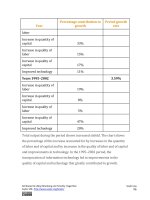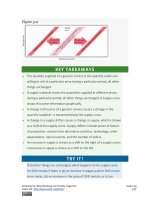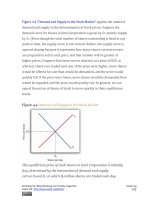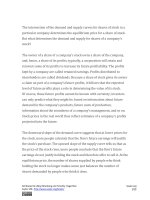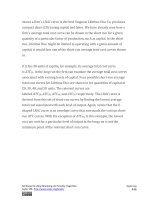Authors libby rittenberg 736
Bạn đang xem bản rút gọn của tài liệu. Xem và tải ngay bản đầy đủ của tài liệu tại đây (502.82 KB, 1 trang )
several ways, all of which involve price-setting behavior. Firms that
purchase inputs may be price setters. Suppliers of inputs may have market
power as well: a firm may have monopoly control over some key input or
input suppliers may band together to achieve market power. Workers may
organize unions. Suppliers of services, such as physicians and hairdressers,
have formed associations that exert power in the marketplace.
This chapter applies the marginal decision rule to the analysis of
imperfectly competitive markets for labor and other factors of production.
Imperfect competition in these markets generally results in a reduction in
the quantity of an input used, relative to the competitive equilibrium. The
price of the input, however, could be higher or lower than in perfect
competition, depending on the nature of the market structure involved.
[1] Mark Hyman, “An Entire Season in the Penalty Box?” Business Week, 3906
(November 1, 2004): 94–95; David Fay, “Game On: NHL Lockout Finally
Over,” The Washington Times, July 14, 2005, p. C1.
14.1 Price-Setting Buyers: The Case of
Monopsony
LEARNING OBJECTIVES
1. Define monopsony and differentiate it from monopoly.
2. Apply the marginal decision rule to the profit-maximizing solution of a
monopsony buyer.
3. Discuss situations of monopsony in the real world.
Attributed to Libby Rittenberg and Timothy Tregarthen
Saylor URL: />
Saylor.org
736
